Space
Sign up for our newsletter
We summarize the week's scientific breakthroughs every Thursday.
-
 Planetary Science
Planetary ScienceMars’ lake may need an underground volcano to exist
If a lake under Martian ice is real, there must be a subsurface magma pool to keep conditions warm enough for water to remain liquid, scientists say.
-
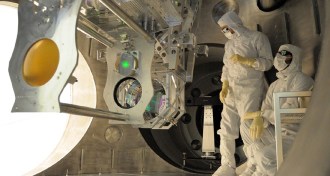 Quantum Physics
Quantum PhysicsLIGO will be getting a quantum upgrade
Quantum squeezing of light will help scientists make better gravitational wave detectors.
-
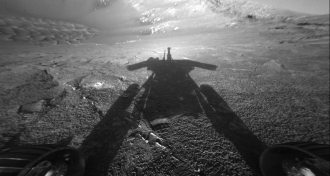 Planetary Science
Planetary ScienceAfter 15 years on Mars, it’s the end of the road for Opportunity
After 15 years of exploring Mars, a dust storm led to the demise of NASA’s longest-lived rover.
-
 Artificial Intelligence
Artificial IntelligenceReaders marvel at AI, space missions and wombat poop
Readers had comments and questions about defining artificial intelligence, the New Horizons space mission and more.
-
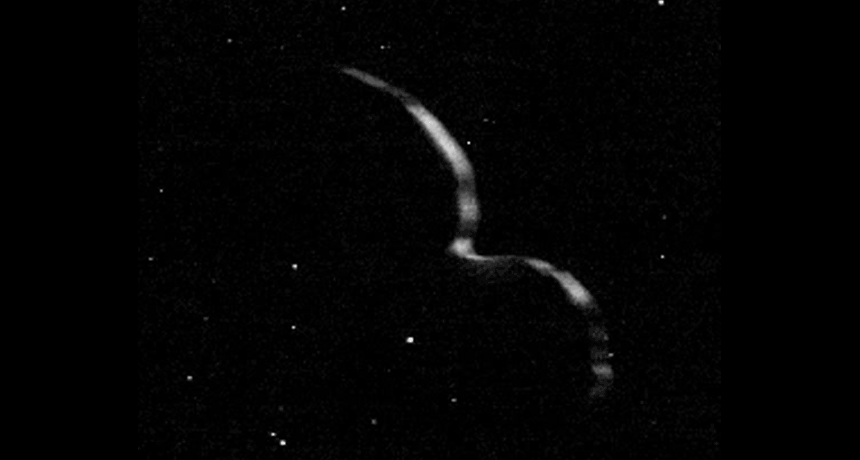 Astronomy
AstronomyUltima Thule is shaped like two lumpy pancakes
Scientists are rethinking the shape of the space rock, once thought to be a snowman.
-
 Planetary Science
Planetary ScienceA basketball-sized rock hit the moon during the last lunar eclipse
Professional and amateur astronomers joined forces to analyze the impact.
-
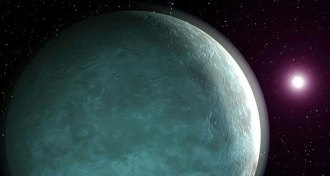 Astronomy
AstronomyA space rock collision may explain how this exoplanet was born
Simulations suggest a planet roughly 2,000 light-years away formed when two space rocks collided, supporting the idea that such events are universal.
By Jeremy Rehm -
 Planetary Science
Planetary ScienceTitan’s oddly thick atmosphere may come from cooked organic compounds
Saturn’s moon Titan might get some of its hazy atmosphere by baking organic molecules in a warm core.
-
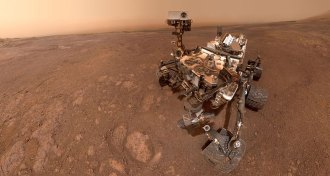 Planetary Science
Planetary ScienceNASA’s Curiosity Mars rover weighed the mountain it’s climbing
Curiosity measures gravity as it drives, allowing scientists to weigh Mount Sharp and determine that the rock is less dense than expected.
-
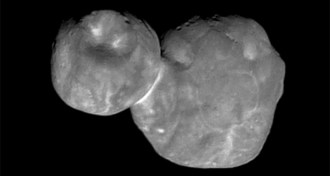 Planetary Science
Planetary ScienceThe latest picture of Ultima Thule reveals a remarkably smooth face
Kuiper Belt object MU69, nicknamed Ultima Thule, is largely unmarred by impact craters, suggesting the Kuiper Belt might lack small objects.
-
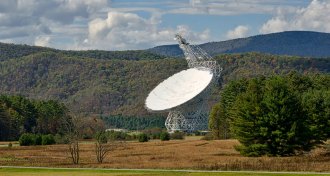 Space
SpaceIt’s time to start taking the search for E.T. seriously, astronomers say
Astronomers are hoping to make looking for alien technology an official science goal of NASA.
-
 Planetary Science
Planetary ScienceWe spent New Year’s Eve in the Kuiper Belt
Editor in Chief Nancy Shute discusses Science News' coverage of NASA's New Horizons spacecraft's flyby of Ultima Thule.
By Nancy Shute